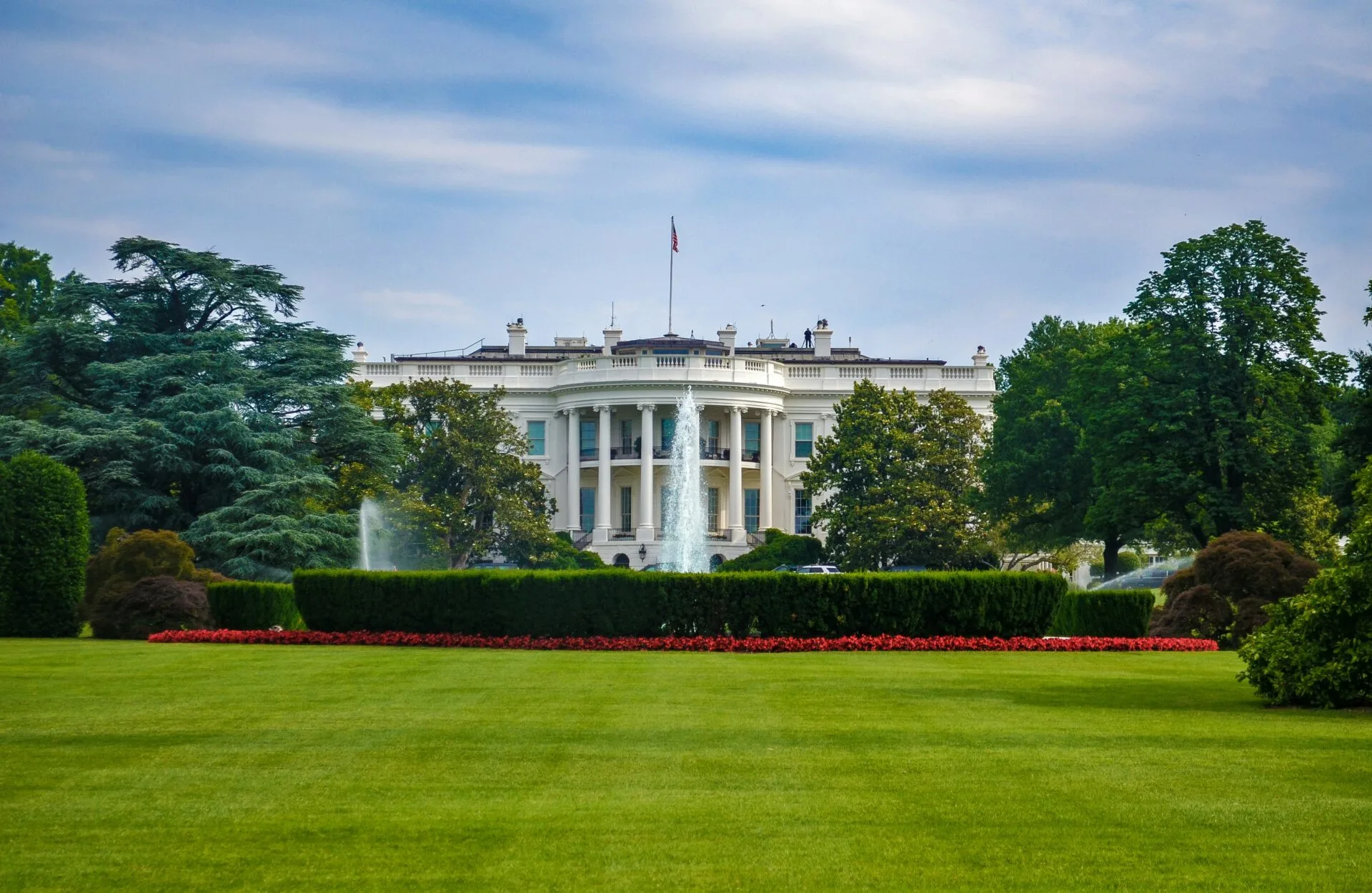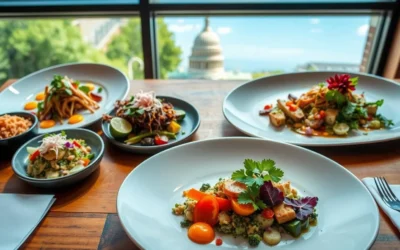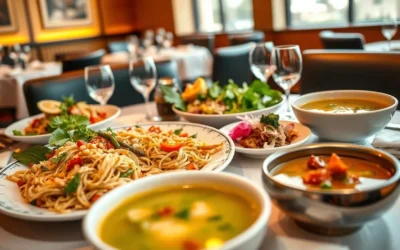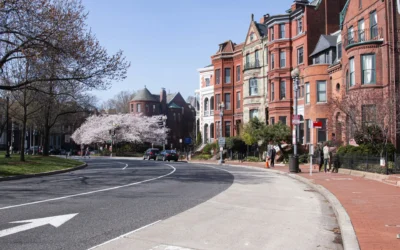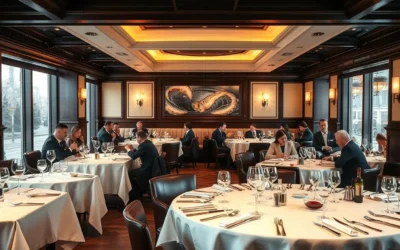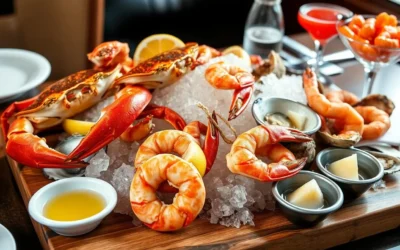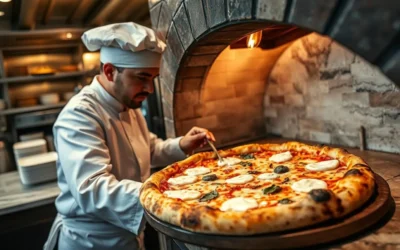Did you know Washington DC has more museums per square mile than any other city in the United States? With 17 free Smithsonian museums alone, visitors could spend weeks exploring the nation’s capital without seeing the same exhibit twice. This cultural abundance makes Washington DC an ideal destination for a week-long visit, offering the perfect balance of iconic monuments, world-class museums, and charming neighborhoods.
As the seat of American government and a treasure trove of national history, Washington DC offers visitors a unique opportunity to walk in the footsteps of presidents, lawmakers, and civil rights leaders. From the majestic monuments of the National Mall to the historic cobblestone streets of Georgetown, a 7-day itinerary allows you to experience both the grandeur and intimate charm of this remarkable city.
Planning Your Washington DC 7-Day Itinerary
Before diving into the day-by-day breakdown, let’s cover some essential planning information to ensure your week in Washington DC goes smoothly. The city is compact and well-organized, making it relatively easy to navigate once you understand its layout and transportation options.
Best Time to Visit Washington DC
Washington DC experiences all four seasons, each offering a different perspective on the city:
Spring (March-May)
Perhaps the most popular time to visit, spring brings the famous cherry blossoms (typically late March to early April) and comfortable temperatures ranging from 50-70°F (10-21°C). The city comes alive with the National Cherry Blossom Festival, though expect larger crowds and higher accommodation prices during this period.
Summer (June-August)
Summer brings hot and humid weather with temperatures often exceeding 85°F (29°C). While this is peak tourist season due to school vacations, the heat can make outdoor sightseeing challenging. Many museums and attractions are air-conditioned, providing welcome relief from the heat.
Fall (September-November)
Fall offers pleasant temperatures between 45-75°F (7-24°C) and beautiful foliage in the city’s many parks. With fewer tourists after Labor Day, fall provides a nice balance of good weather and manageable crowds, making it an excellent time to visit.
Winter (December-February)
Winter temperatures typically range from 30-50°F (-1-10°C), with occasional snowfall. While outdoor activities may be limited by the cold, you’ll find fewer tourists, lower hotel rates, and a magical atmosphere during the holiday season when the city is decorated with festive lights.
For this 7-day itinerary, spring and fall are ideal, offering the most comfortable weather for exploring both indoor and outdoor attractions. If you’re visiting during summer, plan outdoor activities for early morning or evening to avoid the midday heat.
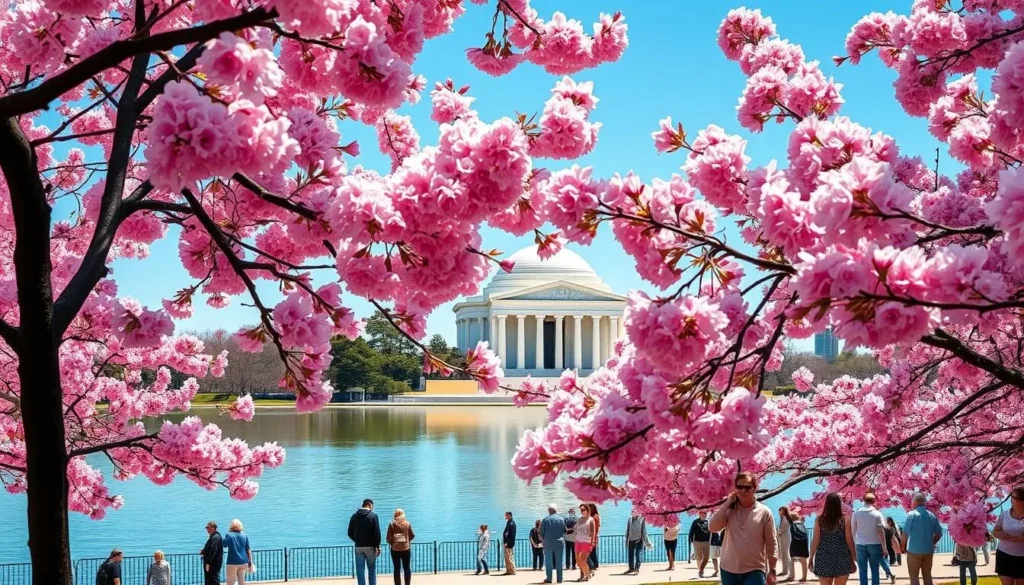
Getting to Washington DC
Washington DC is served by three major airports, making it easily accessible from anywhere in the United States and internationally:
- Ronald Reagan Washington National Airport (DCA) – Located just across the Potomac River in Arlington, Virginia, this is the closest airport to downtown DC (about 5 miles). It’s directly connected to the Metro system.
- Washington Dulles International Airport (IAD) – Located 26 miles west of the city in Virginia, Dulles handles many international flights. The Silver Line Metro extension now connects Dulles to downtown DC.
- Baltimore/Washington International Thurgood Marshall Airport (BWI) – Located 30 miles northeast of DC in Maryland, BWI is often served by budget airlines. It’s connected to DC by the MARC train and various shuttle services.
Find the Best Flights to Washington DC
Compare prices and book your flights to any of Washington DC’s three airports. Early booking often secures the best rates, especially during peak tourist seasons.
Washington DC is also well-connected by train, with Amtrak services to Union Station from major East Coast cities. The high-speed Acela service connects DC to Boston, New York, and Philadelphia. For budget travelers, bus services like Megabus and Greyhound offer affordable options to reach the capital.
Where to Stay in Washington DC
Washington DC offers a variety of neighborhoods to stay in, each with its own character and advantages. Your choice will depend on your budget, preferred attractions, and the type of experience you’re seeking:
Downtown/Penn Quarter
Centrally located near the National Mall and major museums, this area offers convenience for sightseeing. It’s home to many hotels across different price points, restaurants, and entertainment venues. The area can be quiet after business hours.
Best for: First-time visitors prioritizing sightseeing access
Georgetown
This historic neighborhood features charming cobblestone streets, Federal-style architecture, upscale shopping, and waterfront dining. It’s slightly removed from the main tourist areas but offers a more authentic neighborhood feel.
Best for: Visitors seeking charm and character
Dupont Circle
A vibrant area with a mix of residential and commercial spaces, featuring diverse dining options, bookstores, and art galleries. It offers good Metro access and a lively atmosphere both day and night.
Best for: Travelers who enjoy neighborhood exploration and nightlife
Find Your Perfect Washington DC Accommodation
From luxury hotels near the National Mall to charming boutique properties in historic neighborhoods, find the perfect place to stay during your Washington DC visit.
For budget travelers, consider staying in nearby Arlington or Alexandria, Virginia, which offer more affordable accommodations with easy Metro access to DC attractions. These areas are just a short subway ride away from the National Mall and offer their own attractions worth exploring.
Getting Around Washington DC
Washington DC is a highly walkable city with excellent public transportation options:
- Metro – The clean, efficient subway system connects most major attractions and neighborhoods. Purchase a SmarTrip card for the best rates. The Metro operates from 5:00 AM to 11:30 PM on weekdays and 7:00 AM to 1:00 AM on weekends.
- Bus – Metrobus covers areas not served by the subway. The DC Circulator buses are particularly useful for tourists, with routes connecting major attractions for just $1 per ride.
- Capital Bikeshare – With over 500 stations throughout the DC area, this bike-sharing program offers a fun, eco-friendly way to explore. Single-trip, 24-hour, and 3-day passes are available.
- Walking – Many major attractions are concentrated around the National Mall and can be easily explored on foot. Comfortable walking shoes are essential!
- Rideshare/Taxi – Uber and Lyft operate throughout the city, and traditional taxis are readily available in tourist areas.
Need More Flexibility? Rent a Car
While a car isn’t necessary within DC itself, it can be useful for day trips to Mount Vernon, Gettysburg, or other surrounding attractions. Compare rental options and rates here:
For this 7-day itinerary, we recommend relying primarily on walking and public transportation within the city, with perhaps a rental car for just one day to explore attractions outside the city limits.
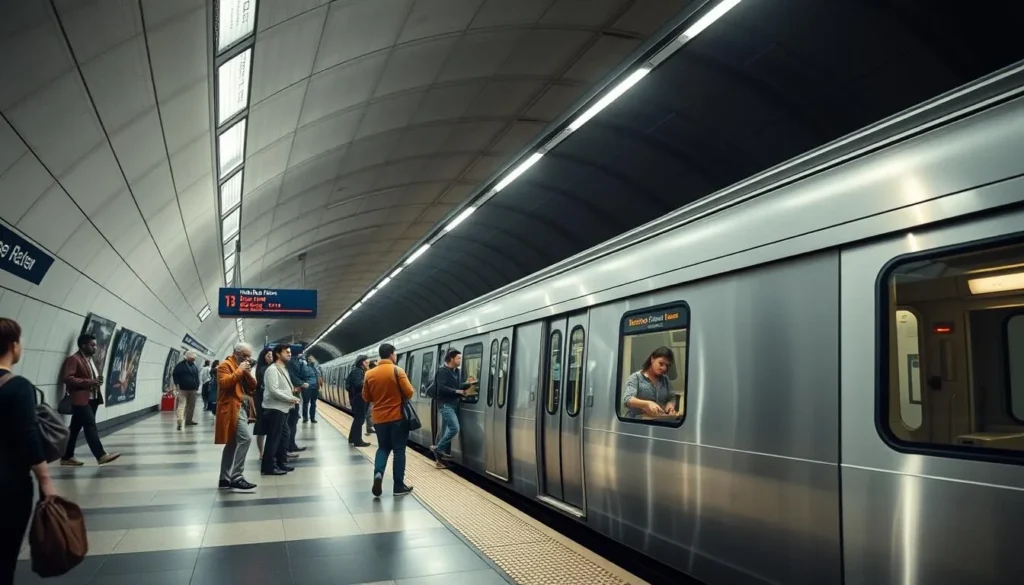
Day 1: National Mall Monuments and Memorials
Begin your Washington DC adventure with the iconic monuments and memorials along the National Mall. This expansive green space is often called “America’s front yard” and houses some of the nation’s most recognizable symbols.
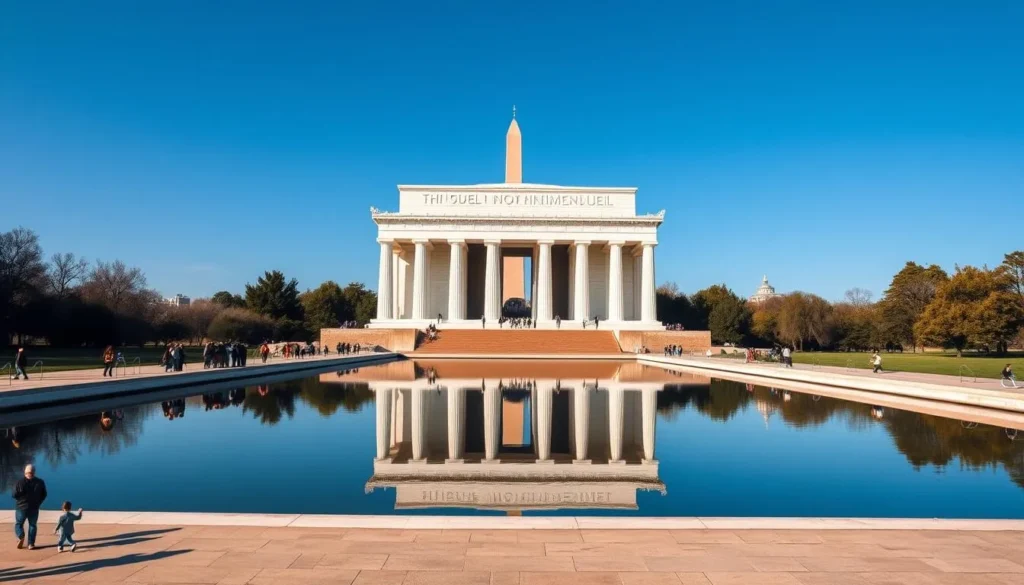
Morning: Washington Monument and World War II Memorial
Start your day early at the Washington Monument, the 555-foot marble obelisk honoring America’s first president. If you wish to go to the top for panoramic views of the city, be sure to reserve tickets in advance through the National Park Service website.
Next, walk to the World War II Memorial at the east end of the Reflecting Pool. This impressive memorial features 56 pillars representing U.S. states and territories during the war, surrounding a fountain. Take time to appreciate the detailed bronze reliefs depicting scenes from the war effort.
Midday: Lincoln Memorial and Vietnam Veterans Memorial
Continue west along the Reflecting Pool to reach the Lincoln Memorial, one of DC’s most beloved monuments. Climb the steps to see the 19-foot marble statue of Abraham Lincoln and read his famous speeches inscribed on the walls. From the top steps, you’ll enjoy a spectacular view back across the Reflecting Pool toward the Washington Monument and U.S. Capitol.
A short walk north will bring you to the Vietnam Veterans Memorial, a moving tribute featuring a black granite wall inscribed with the names of more than 58,000 Americans who died or went missing during the Vietnam War. The simplicity of this memorial often creates a powerful emotional experience for visitors.
Afternoon: Korean War Veterans Memorial and Martin Luther King, Jr. Memorial
Continue your exploration with a visit to the Korean War Veterans Memorial, featuring 19 stainless steel statues representing a squad on patrol, complemented by a granite wall with photographic images from the war.
Next, head to the Martin Luther King, Jr. Memorial, a relatively recent addition to the National Mall. The centerpiece is a 30-foot statue of Dr. King emerging from a “Stone of Hope,” with his powerful quotes inscribed on the surrounding walls.
Evening: Jefferson Memorial and Tidal Basin
As the day winds down, make your way to the Tidal Basin to visit the Thomas Jefferson Memorial. This neoclassical structure houses a 19-foot bronze statue of Jefferson and excerpts from the Declaration of Independence. The area is particularly beautiful at sunset, when the marble monuments take on a golden glow.
If you’re visiting during cherry blossom season (late March to early April), the Tidal Basin offers some of the most spectacular views of the pink and white blooms framing the monuments.
Enhance Your Monument Experience
Consider joining a guided tour of the National Mall monuments to gain deeper insights into their history and significance. Many tours operate during the day and at night when the monuments are beautifully illuminated.
Dining tip: Food options directly on the National Mall are limited. Consider packing a picnic lunch or visiting the cafe at the Smithsonian National Museum of American History. For dinner, head to nearby Penn Quarter or Chinatown for a variety of dining options.
Day 2: Smithsonian Museums
Dedicate your second day to exploring some of the world-renowned Smithsonian museums along the National Mall. With 17 museums and galleries (plus the National Zoo) all offering free admission, you’ll need to be selective about which ones to visit.
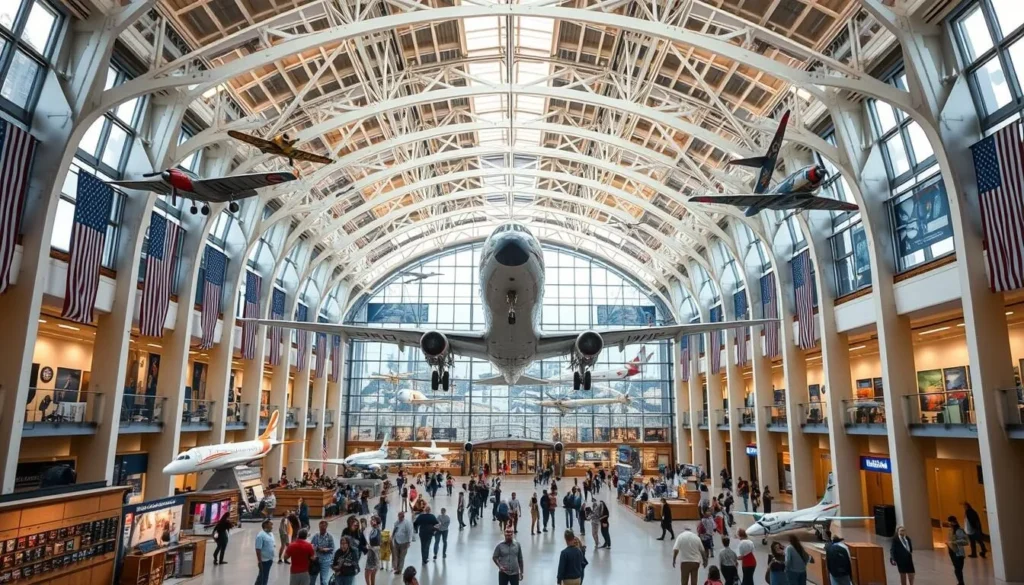
Morning: National Air and Space Museum
Begin at the National Air and Space Museum, one of the most visited museums in the world. Explore the history of flight from the Wright Brothers’ first airplane to the Apollo lunar module. Don’t miss the Wright Flyer, Spirit of St. Louis, and the Apollo 11 command module. The museum reopened in 2022 after extensive renovations, with stunning new exhibits and interactive displays.
If you’re traveling with children, they’ll love the interactive “How Things Fly” gallery where they can experiment with the principles of flight. The museum also features an IMAX theater and planetarium (additional fees apply).
Midday: National Museum of American History
Cross the National Mall to visit the National Museum of American History, home to an incredible collection of artifacts that tell the story of America’s past. Highlights include the original Star-Spangled Banner, Dorothy’s ruby slippers from “The Wizard of Oz,” the First Ladies’ inaugural gowns, and Julia Child’s kitchen.
The museum’s “American Democracy: A Great Leap of Faith” exhibition provides context for many of the government institutions you’ll be seeing throughout your visit to Washington DC.
Afternoon: National Museum of Natural History
Continue your Smithsonian exploration at the National Museum of Natural History. Marvel at the 45.52-carat Hope Diamond in the Janet Annenberg Hooker Hall of Geology, Minerals, and Gems. The museum’s dinosaur hall, recently renovated, features an impressive T. rex skeleton and interactive paleontology exhibits.
Other highlights include the Sant Ocean Hall with its model of a North Atlantic right whale, the Butterfly Pavilion (timed tickets required), and the fascinating Human Origins exhibit.
Evening: National Gallery of Art
End your museum day at the National Gallery of Art, which technically isn’t part of the Smithsonian but is also free and located on the National Mall. The gallery houses an exceptional collection of European and American paintings, sculptures, and decorative arts spanning from the Middle Ages to the present.
In the East Building, you’ll find modern and contemporary art, while the West Building houses older works, including the only Leonardo da Vinci painting in the Americas. If weather permits, take a stroll through the beautiful Sculpture Garden.
Museum tip: Most Smithsonian museums open at 10:00 AM and close at 5:30 PM. To avoid the largest crowds, arrive right at opening time or visit in the late afternoon. Check the Smithsonian website for the latest hours and any special exhibitions.
While admission to all Smithsonian museums is free, some special exhibitions or IMAX films may require paid tickets. Consider downloading the Smithsonian mobile app to help navigate the museums and identify key exhibits you don’t want to miss.
Day 3: U.S. Capitol, Library of Congress, and More
On your third day, explore the heart of American democracy with visits to key government buildings and institutions on Capitol Hill.
Morning: U.S. Capitol Building
Start your day with a tour of the U.S. Capitol Building, the seat of the legislative branch of the U.S. government. Free guided tours are available, but advance reservations are strongly recommended through the U.S. Capitol Visitor Center website. The tour includes the magnificent Rotunda with its 180-foot dome and the National Statuary Hall.
If Congress is in session, you may be able to obtain gallery passes to observe the House or Senate in action. These passes are available through the offices of your senators or representative.
Midday: Library of Congress
Connected to the Capitol by an underground tunnel is the Library of Congress, the largest library in the world. The Thomas Jefferson Building is worth visiting for its spectacular architecture alone, with elaborate mosaics, murals, and sculptures. Don’t miss the Main Reading Room overlook and the Gutenberg Bible display.
Free guided tours are offered throughout the day, or you can explore on your own with a self-guided tour brochure. The Library of Congress also hosts rotating exhibitions highlighting treasures from its vast collections.
Afternoon: Supreme Court and U.S. Botanic Garden
Just across the street from the Capitol is the Supreme Court of the United States. When the Court is not in session, you can take a 30-minute courtroom lecture to learn about the judicial process and the building’s architecture. The building’s grand marble exterior features the famous phrase “Equal Justice Under Law” above its main entrance.
Afterward, visit the nearby U.S. Botanic Garden, one of the oldest botanic gardens in North America. This living plant museum offers a welcome respite from the city with its conservatory of exotic plants and outdoor gardens. The garden is particularly lovely in spring when many plants are in bloom.
Evening: Eastern Market and Capitol Hill
Spend your evening exploring the historic Capitol Hill neighborhood. Visit Eastern Market, a restored 19th-century public market offering fresh produce, crafts, and food vendors. The market is especially lively on weekends but offers dining options throughout the week.
Take a leisurely stroll through the residential streets of Capitol Hill, admiring the colorful row houses and historic architecture. For dinner, the area around Pennsylvania Avenue SE (known as “Barracks Row”) offers numerous restaurants ranging from casual to upscale.
Discover More of DC’s History and Culture
Enhance your Capitol Hill experience with a guided tour that provides historical context and behind-the-scenes insights.
Planning tip: Security is tight at government buildings. Bring a photo ID and expect to go through security screenings. Large bags, food, and drinks are typically not permitted inside these buildings.
Day 4: The White House, National Archives, and Museums
Your fourth day combines a visit to the most famous address in America with some of DC’s most fascinating museums.
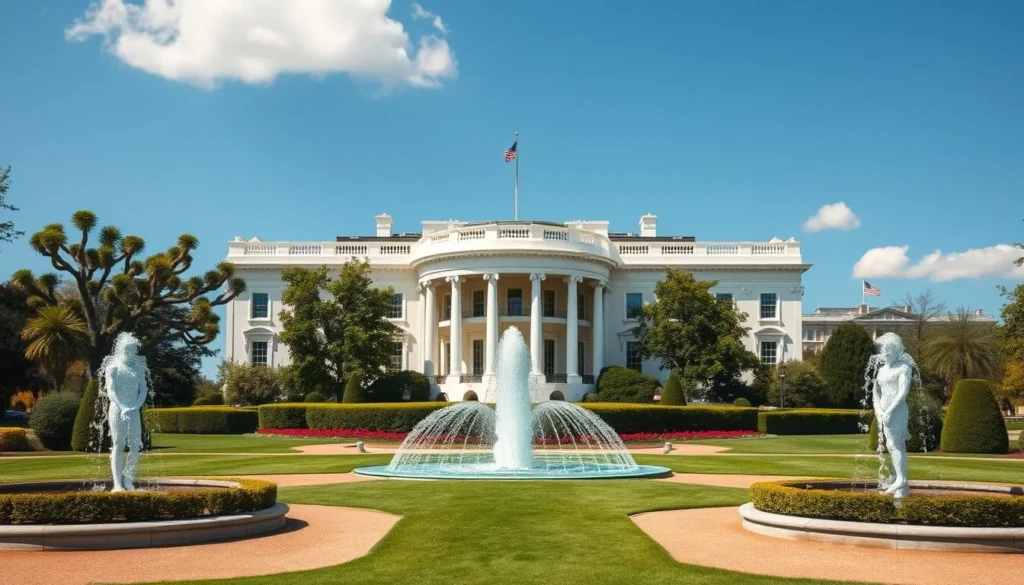
Morning: The White House
Begin your day with a visit to the White House, the official residence and workplace of the U.S. President. Public tours are available but must be requested through your Member of Congress 3-6 months in advance. If you weren’t able to secure a tour, you can still view the White House from the North Lawn (Pennsylvania Avenue) and South Lawn (E Street).
Visit the White House Visitor Center on Pennsylvania Avenue to learn about the history of the White House and its residents through interactive exhibits and artifacts. The nearby Ellipse offers good photo opportunities, especially during the holiday season when it features the National Christmas Tree.
Midday: National Archives
Make your way to the National Archives to see the founding documents of the United States: the original Declaration of Independence, Constitution, and Bill of Rights. These fragile documents are displayed in the dimly lit Rotunda for the Charters of Freedom.
The Archives also house fascinating exhibitions on American history and the Public Vaults exhibit, which provides access to some of the Archives’ most interesting records. Free timed-entry tickets are recommended, especially during peak tourist season.
Afternoon: Choose Your Museum Adventure
Washington DC offers many specialized museums beyond the main Smithsonian institutions. Choose one or two based on your interests:
International Spy Museum
This engaging museum explores the craft, history, and contemporary role of espionage. Interactive exhibits allow visitors to test their own spy skills while learning about famous spies and their gadgets. This is one of the few museums in DC that charges admission ($24.95 for adults).
National Museum of African American History and Culture
The newest Smithsonian museum presents the African American experience and its importance to American history. The powerful exhibits cover slavery, segregation, the civil rights movement, and African American contributions to arts, sports, and culture. Free timed-entry passes are required.
United States Holocaust Memorial Museum
This moving museum documents the Holocaust through artifacts, photographs, films, and survivor testimonies. The permanent exhibition presents a chronological narrative of Nazi persecution. Free timed-entry tickets are required for the permanent exhibition during peak season (March-August).
Evening: Penn Quarter and Chinatown
Spend your evening exploring the vibrant Penn Quarter and Chinatown neighborhoods. The area is home to the Capital One Arena (where the Washington Capitals and Wizards play), numerous restaurants, and entertainment venues.
Chinatown, centered around H Street NW, features the ornate Friendship Archway and a variety of Asian restaurants alongside modern establishments. The area is particularly lively in the evening with its colorful neon signs and bustling sidewalks.
Dining tip: For an upscale dining experience, consider one of the restaurants by celebrity chef José Andrés in Penn Quarter. For more casual options, Chinatown offers everything from quick-service noodle shops to full-service restaurants.
Day 5: Georgetown and the Waterfront
Take a break from monuments and museums to explore Georgetown, one of DC’s most charming historic neighborhoods.
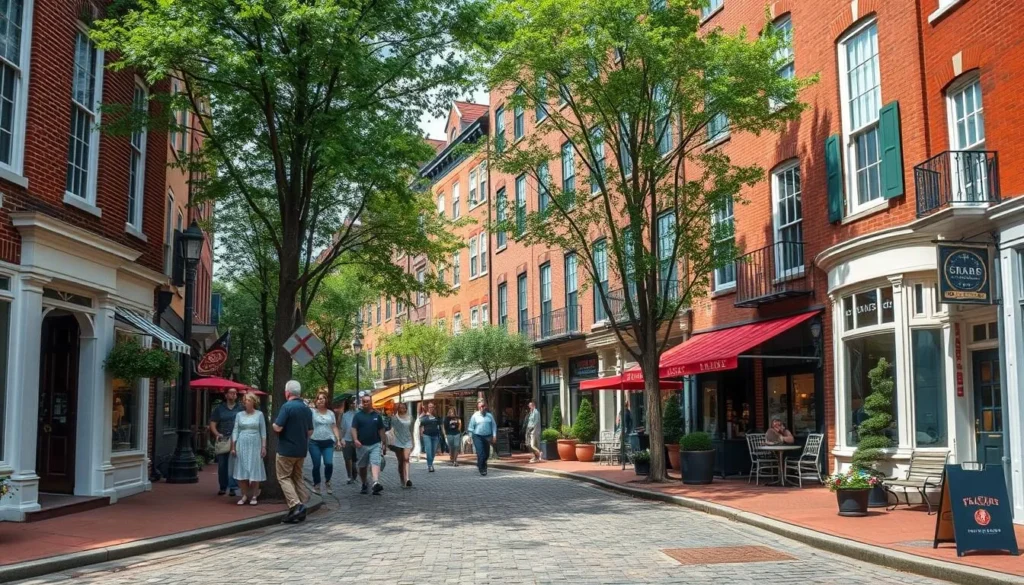
Morning: Georgetown University and Historic Homes
Begin your day with a stroll through the beautiful campus of Georgetown University, founded in 1789 as the nation’s first Catholic and Jesuit university. The campus features Gothic architecture and lovely grounds that are open to visitors.
Next, explore some of Georgetown’s historic homes. The Old Stone House on M Street is the oldest unchanged building in Washington DC, dating back to 1765. Nearby, Dumbarton Oaks offers a combination of beautiful gardens, a historic mansion, and a museum with Byzantine and Pre-Columbian art collections (the gardens have a small admission fee).
Midday: Shopping on M Street and Wisconsin Avenue
Georgetown is a premier shopping destination in DC. M Street and Wisconsin Avenue form the main commercial corridors, offering everything from major retailers to unique boutiques. Browse the fashion stores, home decor shops, and specialty retailers like Georgetown Cupcake, made famous by the TLC show “DC Cupcakes.”
For lunch, choose from Georgetown’s many restaurants, cafes, and bakeries. The neighborhood offers options ranging from casual sandwich shops to upscale dining establishments.
Afternoon: C&O Canal and Georgetown Waterfront
Explore the historic Chesapeake & Ohio Canal, which begins in Georgetown. The towpath along the canal offers a peaceful walking route away from the busy streets. The first mile of the canal has been restored with boat rides available seasonally.
Continue to the Georgetown Waterfront Park along the Potomac River. This urban park offers green spaces, fountains, and excellent views of the Key Bridge, Roosevelt Island, and the Kennedy Center. It’s a perfect spot to relax and watch kayakers and rowers on the river.
Evening: Dinner and Nightlife
Georgetown offers some of DC’s finest dining experiences, particularly along the waterfront. Enjoy dinner with river views at one of the restaurants in Washington Harbour, a mixed-use development with a large fountain that transforms into an ice skating rink in winter.
After dinner, experience Georgetown’s nightlife. While the neighborhood doesn’t have Metro access, it’s well-served by buses, rideshare services, and the DC Circulator. If you’re feeling adventurous, descend the “Exorcist Steps” at the corner of Prospect Street and 36th Street, made famous in the 1973 horror film.
Explore Georgetown’s Hidden Gems
Discover the secrets of this historic neighborhood with a guided walking tour that covers Georgetown’s fascinating past and notable residents.
Transportation tip: Georgetown does not have its own Metro station. The closest stations are Foggy Bottom-GWU (Blue/Orange/Silver lines) and Rosslyn (Blue/Orange/Silver lines), both about a 15-20 minute walk from the center of Georgetown. The DC Circulator bus provides convenient service to Georgetown from downtown.
Day 6: Day Trip to Mount Vernon
Take a break from the city to visit Mount Vernon, George Washington’s historic estate located just 16 miles south of Washington DC along the Potomac River.
Morning: Mount Vernon Estate and Gardens
Arrive at Mount Vernon early to explore the 21-room mansion where George Washington lived from 1754 until his death in 1799. Guided tours of the mansion provide insights into Washington’s life as a gentleman farmer and the first President of the United States.
After touring the mansion, explore the beautifully restored gardens and grounds. The estate encompasses nearly 50 acres of lawns, gardens, and forest. Don’t miss the Upper Garden with its formal boxwood parterre and the working four-acre Pioneer Farm where Washington implemented innovative farming practices.
Midday: Lunch and Museums
Enjoy lunch at the Mount Vernon Inn Restaurant, which serves traditional American cuisine in a colonial setting, or at the casual food court in the visitor center.
Spend the afternoon exploring the educational facilities at Mount Vernon. The Donald W. Reynolds Museum and Education Center features 23 galleries and theaters with interactive exhibits about Washington’s life and legacy. The museum houses hundreds of original artifacts, including Washington’s dentures (which were not made of wood, contrary to popular belief).
Afternoon: Washington’s Tomb and Slave Memorial
Pay your respects at Washington’s Tomb, where both George and Martha Washington are interred. Nearby, visit the Slave Memorial and Cemetery, which honors the enslaved people who lived and worked at Mount Vernon.
If time permits, take the walking path down to the wharf on the Potomac River for beautiful views of the river and Maryland shoreline. Seasonal boat tours of the Potomac are available from the wharf (additional fee).
Evening: Return to DC and Dinner in Old Town Alexandria
On your return to Washington DC, stop in Old Town Alexandria for dinner. This charming historic district features well-preserved 18th and 19th-century buildings, cobblestone streets, and a vibrant dining scene along King Street.
After dinner, take a stroll along the Alexandria waterfront at Founders Park or the Torpedo Factory Art Center, a former munitions plant now housing galleries and studios for over 80 artists.
Visit Mount Vernon with Ease
Consider a guided tour that includes transportation to and from Washington DC, admission to Mount Vernon, and expert commentary throughout your visit.
Transportation tip: While Mount Vernon is accessible by public transportation (Metrorail to Huntington station, then Fairfax Connector bus), having a rental car for this day trip offers the most flexibility, especially if you want to explore Old Town Alexandria afterward.
Mount Vernon is open 365 days a year. Tickets can be purchased online in advance or at the gate. The estate is particularly beautiful in spring when the gardens are in bloom and in fall when the foliage changes color.
Day 7: Exploring Beyond the Tourist Trail
For your final day in Washington DC, venture beyond the main tourist attractions to discover some of the city’s diverse neighborhoods and lesser-known gems.
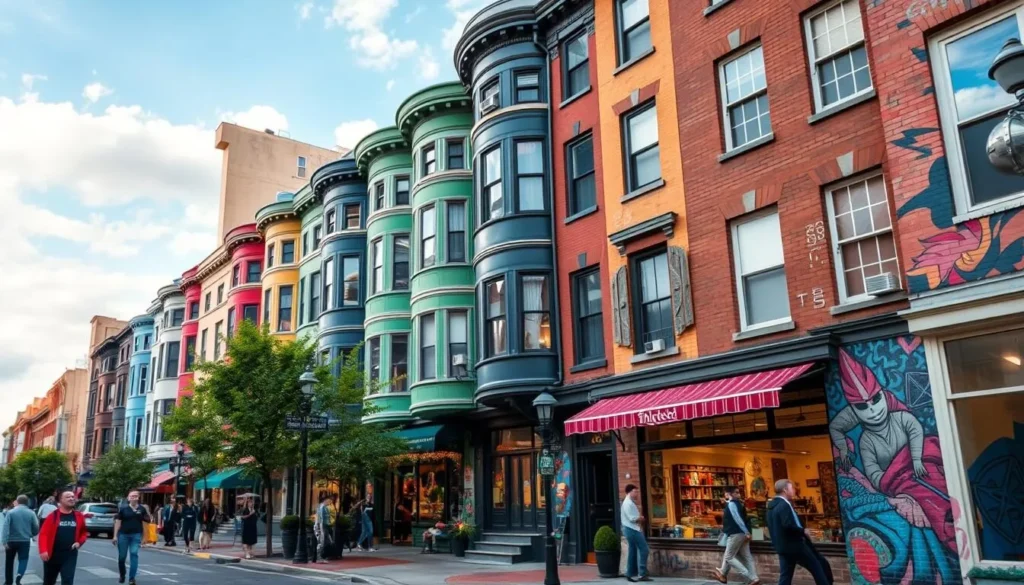
Morning: National Cathedral and Embassy Row
Begin your day with a visit to the Washington National Cathedral, a magnificent Gothic cathedral that took 83 years to complete (1907-1990). Explore the beautiful interior with its stained glass windows, including the famous “Space Window” containing a piece of lunar rock. Climb to the tower for panoramic views of the city, or stroll through the peaceful Bishop’s Garden.
Next, take a walk along Embassy Row on Massachusetts Avenue, where many countries maintain their diplomatic missions in historic mansions and modern buildings. The stretch between Dupont Circle and the National Cathedral is particularly impressive, with embassies often flying their national flags.
Midday: Adams Morgan and U Street
Head to the diverse Adams Morgan neighborhood, known for its international restaurants, colorful murals, and independent shops. This multicultural area offers cuisine from around the world—Ethiopian, Salvadoran, Vietnamese, and more—making it perfect for lunch exploration.
Continue to the historic U Street corridor, once known as “Black Broadway” for its significance in African American culture and entertainment. Visit the African American Civil War Memorial and Museum, which honors the 209,145 African American soldiers who fought in the Civil War.
Afternoon: Choose Your Own Adventure
For your final afternoon, choose from these options based on your interests:
National Arboretum
This 446-acre living museum features extensive gardens, collections of bonsai trees, and the iconic National Capitol Columns—22 Corinthian columns that once supported the U.S. Capitol before its dome was completed. The Arboretum is particularly beautiful during azalea season (April-May).
Kenilworth Aquatic Gardens
This hidden gem in Northeast DC is the only National Park dedicated to aquatic plants. Visit in summer (June-July) to see spectacular lotus and water lily blooms. Boardwalks take you through ponds and marshes teeming with wildlife.
Phillips Collection
America’s first museum of modern art, housed in a beautiful Dupont Circle mansion. The intimate galleries feature works by Renoir, Rothko, O’Keeffe, and many others. Don’t miss Renoir’s masterpiece “Luncheon of the Boating Party.”
Evening: Farewell Dinner and Monuments by Night
For your final evening, enjoy a special dinner in one of DC’s acclaimed restaurants. The 14th Street corridor offers some of the city’s most innovative dining options, while the Wharf development on the Southwest Waterfront combines waterfront views with excellent restaurants.
After dinner, take a twilight tour of the monuments. Many visitors consider the monuments even more impressive when illuminated at night. The Lincoln Memorial, Jefferson Memorial, and Martin Luther King, Jr. Memorial are particularly striking after dark, with their white marble glowing against the night sky.
Make Your Last Night Special
Consider a guided night tour of the monuments or a dinner cruise on the Potomac River for a memorable conclusion to your Washington DC visit.
Photography tip: For the best night photography of the monuments, bring a tripod if possible. The Lincoln Memorial reflecting in the pool with the Washington Monument in the background is one of DC’s most iconic night views.
Practical Tips for Your Washington DC Visit
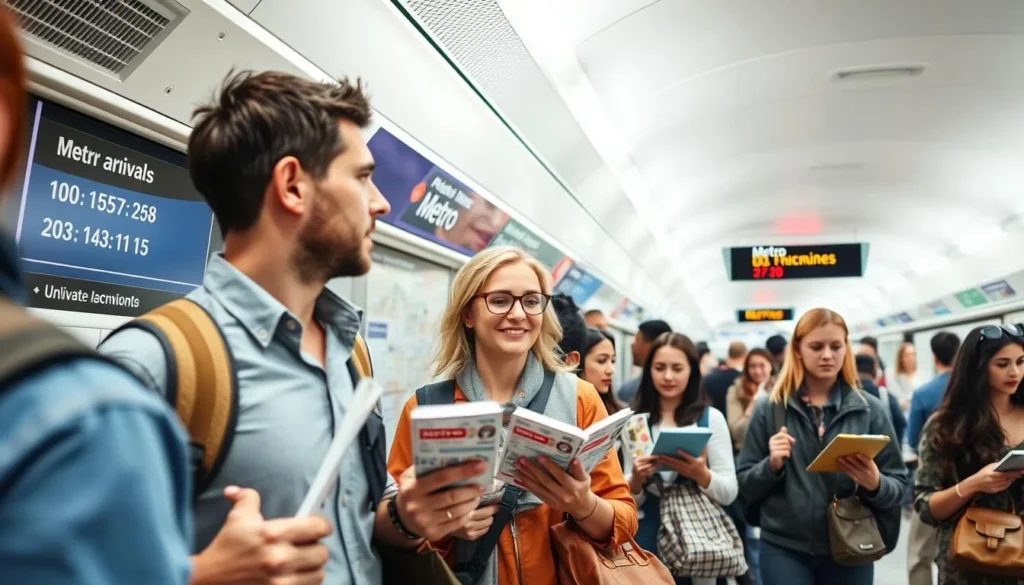
Weather and What to Pack
Washington DC experiences four distinct seasons, each requiring different packing strategies:
- Spring: Pack layers, as temperatures can vary widely. A light raincoat is essential, as spring showers are common. Comfortable walking shoes are a must for exploring the National Mall.
- Summer: Prepare for hot and humid conditions with lightweight, breathable clothing. Bring a hat, sunglasses, sunscreen, and a refillable water bottle. Many buildings are heavily air-conditioned, so a light sweater or jacket can be useful indoors.
- Fall: Similar to spring, layers are key. A light jacket or sweater is recommended, especially for evening activities.
- Winter: Pack warm clothing including a heavy coat, gloves, hat, and scarf. Waterproof boots are advisable if snow is in the forecast.
Money-Saving Tips
- Take advantage of the many free attractions, including all Smithsonian museums and National Mall monuments.
- Consider purchasing a SmarTrip card for public transportation, which offers better rates than individual tickets.
- Many museums offer free admission on specific days or evenings—check their websites for details.
- Look for happy hour specials at restaurants and bars, typically between 4-7 PM on weekdays.
- Bring a refillable water bottle—DC tap water is safe to drink, and there are water fountains throughout the National Mall and museums.
Safety Information
Washington DC is generally safe for tourists, especially in the main visitor areas. However, as in any major city, it’s important to stay aware of your surroundings:
- Tourist areas are well-patrolled, but exercise caution in less-frequented neighborhoods, especially at night.
- Keep valuables secure and be mindful of your belongings, particularly in crowded areas and on public transportation.
- The Metro is safe to use, but stations can be less busy late at night.
- In case of emergency, dial 911 for police, fire, or medical assistance.
Local Etiquette
- Stand on the right, walk on the left on Metro escalators—this is strictly observed by locals.
- When visiting memorials and monuments, maintain a respectful demeanor, particularly at the war memorials and Arlington National Cemetery.
- Washington DC has a diverse population and is generally politically progressive, though you’ll encounter people from across the political spectrum.
- Tipping is expected in restaurants (18-20% of the pre-tax total) and for taxi/rideshare drivers (15-20%).
Many government buildings have security checkpoints similar to those at airports. To save time, avoid bringing large bags or prohibited items like weapons, aerosols, or food and drinks when visiting these locations.
Washington DC Culinary Experiences
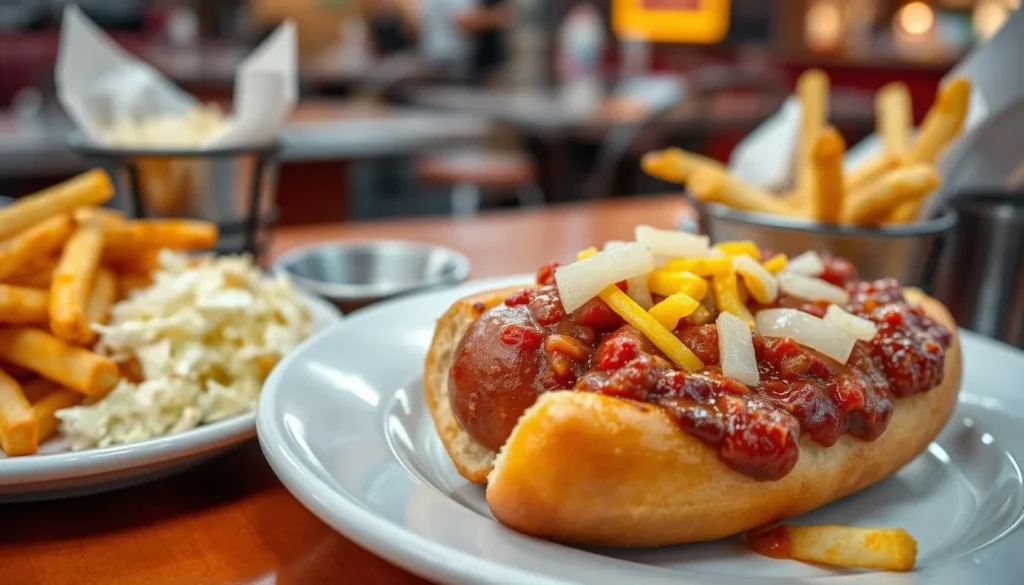
While Washington DC isn’t known for a single defining cuisine, its diverse population has created a rich culinary landscape worth exploring:
Local Specialties
- Half-Smoke: DC’s signature street food is a smoky, spicy sausage typically served with chili, mustard, and onions. Try it at the historic Ben’s Chili Bowl on U Street.
- Mumbo Sauce: A sweet and tangy condiment found in many DC takeout spots, particularly with fried chicken or Chinese food.
- Chesapeake Crab: While more associated with Maryland, blue crab dishes are popular throughout the DC area, especially in summer.
- Pupusas: Thanks to DC’s large Salvadoran community, these stuffed corn tortillas are widely available and delicious.
Diverse International Cuisine
Washington DC’s international community has created vibrant food scenes throughout the city:
- Ethiopian: DC has one of the largest Ethiopian populations outside of Ethiopia. Visit the restaurants along 9th Street NW (Little Ethiopia) for authentic injera bread and flavorful stews.
- Vietnamese: Eden Center in nearby Falls Church, Virginia, offers an authentic Vietnamese food experience with dozens of restaurants and bakeries.
- Salvadoran: Mount Pleasant and Columbia Heights neighborhoods feature excellent Salvadoran restaurants serving pupusas, yuca con chicharrón, and other specialties.
Farmers Markets
Washington DC has embraced the farm-to-table movement with numerous farmers markets throughout the city:
- Eastern Market: This historic market on Capitol Hill operates daily (except Mondays) with a larger outdoor market on weekends.
- FRESHFARM Dupont Circle Market: One of the city’s largest farmers markets, open on Sundays year-round.
- Union Market: An indoor food hall featuring local vendors, artisanal products, and diverse dining options.
Dining tip: Reservations are recommended for popular restaurants, especially on weekends and during peak tourist seasons. Many restaurants offer pre-theater menus if you’re planning to attend a performance at the Kennedy Center or another venue.
Conclusion: Your Washington DC Adventure Awaits
Washington DC offers a perfect blend of history, culture, and vibrant urban experiences that make it an ideal destination for a week-long visit. From the iconic monuments that tell America’s story to world-class museums housing national treasures, from historic neighborhoods with distinct character to diverse culinary scenes reflecting the city’s international population—DC truly has something for everyone.
This 7-day itinerary provides a comprehensive introduction to the nation’s capital, balancing must-see attractions with off-the-beaten-path experiences. Whether you’re standing in the shadow of the Lincoln Memorial, exploring the halls of the Smithsonian museums, or enjoying a half-smoke at a local eatery, you’ll gain a deeper appreciation for this unique city that serves as both the seat of government and a living museum of American history.
As you walk in the footsteps of presidents, lawmakers, activists, and ordinary citizens who have shaped the nation, you’ll understand why Washington DC remains one of America’s most fascinating and rewarding destinations. Your 7-day journey through the capital city promises memories that will last a lifetime.
Ready to Experience Washington DC?
Start planning your perfect 7-day Washington DC adventure today with these essential travel services:
